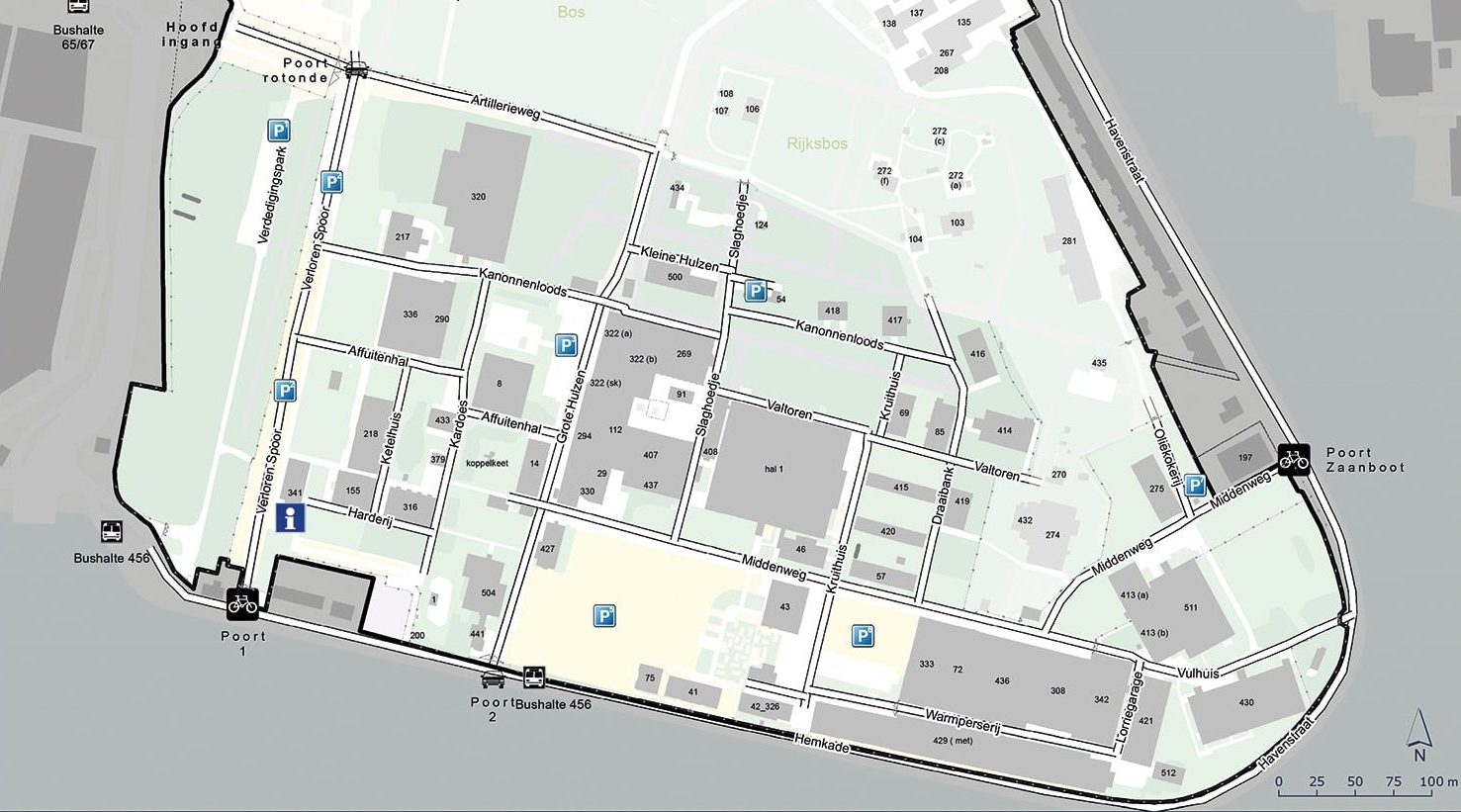For more than a hundred years, the Hembrug site in Zaandam was devoted to the national ammunition and weapons factory ‘Artillerie Inrichtingen’. Weapons and ammunition were made, tested, and stored here in the utmost secrecy. Discover the rich history of the Hembrug site and what the various buildings were used for in the days when Hembrug was still an ammunition and weapons factory.
The buildings on the Hembrug site often have nicknames; officially the buildings numbers rather than names. These numbers do not match the house numbers that the buildings have recently received. The seemingly random numbers are the result of buildings being demolished and built over time.
On several buildings on the Hembrug site, you can find signs with QR codes. Scan such codes with your phone and read about the history of the building.











